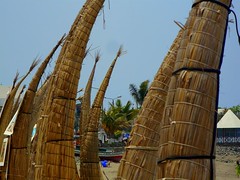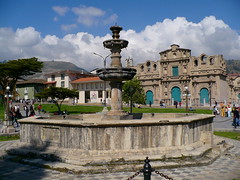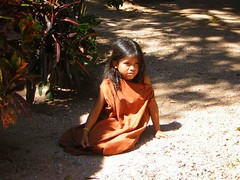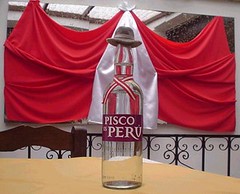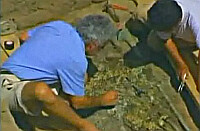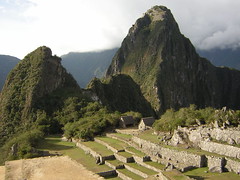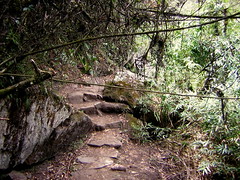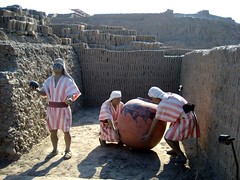Chan Chan
It was the largest city that had existed in South America and remained that way even when it lay in ruins during part of the Spanish colonial period. At 18km2 by some measurements and more than 20km2 including its surrounding agricultural districts, this gigantic city formed the capital of the Chimor kingdom of the Chimú civilisation.
Located 5km west of modern Trujillo, out-sizing it until modern expansion, the ruins of Chan Chan are an extraordinary sight. Consisting of 10 citadels constructed by 10 generations of rulers, it would be impossible to visit it all.
Chan Chan now lays in a dilapidated state. Damage caused by El Niño rains have left the once towering walls of Chan Chan looking like melted snow. The most recent and most sever damage took place early last century when most of the remaining details on the walls were washed away.
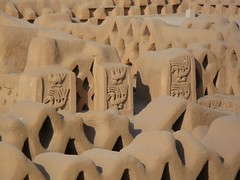 Of the massive archaeological site, one small part, in itself huge, has been saved from the elements with careful restoration. Known as the Tschudi Complex, it is one of the last of 10 urban complexes constructed. In Chan Chan the Chimor rulers were expected to construct their own living and administrative centres to manage the kingdom. When a ruler dies, he and all his administrative staff are buried with him inside his complex. The complex is then sealed and a new one constructed by the following ruler.
Of the massive archaeological site, one small part, in itself huge, has been saved from the elements with careful restoration. Known as the Tschudi Complex, it is one of the last of 10 urban complexes constructed. In Chan Chan the Chimor rulers were expected to construct their own living and administrative centres to manage the kingdom. When a ruler dies, he and all his administrative staff are buried with him inside his complex. The complex is then sealed and a new one constructed by the following ruler.
Exploring the entire site can be done on foot, but there’s not much to see other than melted walls. In the Tschudi Complex however, you get an idea of how spectacular Chan Chan was.
The walls are constructed with adobe bricks, and covered with a smooth surface on which images were carved. These images had a maritime theme of fish, waves and pelican birds, a bird they also used to help them fish. Think bird on a string.

The Tschudi complex consists of 3 plazas, increasingly less exquisitely decorated as you move closer and closer to the residential areas. There was less need to show off to chieftains bringing tribute in these areas as they would not be visited. Other significant parts of the complex are the administration and taxation areas. In this part of the city there are many booths to which representatives from specific parts of the kingdom would bring their tributes to be accounted for. In this area, filled with people surrounded by baking mud walls, the Chimú made ventilation a priority. Here the walls were designed with holes in the form of fishing nets. All these areas are connected by corridors with towering decorated walls leading, eventually, towards the area of the ruling elite and the king himself. Here you will also find the one of the city’s water supplies, a deep pool dug down below the ground water level.
In the palace area of the city is the tomb of the ruler of this time, buried with many others to accompany him in the afterlife. With all the political elite killed off, the next generation took control of the kingdom.
Photos –
Tags: adobe, chan chan, chimor, chimu, fishing, la libertad, ruins



